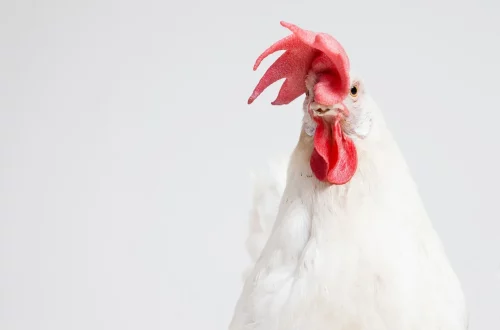
Understanding Mim Symptoms in Horses: A Comprehensive Guide
Understanding the health and well-being of horses is a crucial aspect of responsible equine ownership. Horses are sensitive creatures, and their bodies and minds can be affected by a myriad of factors, including environmental stressors, nutritional imbalances, and underlying health issues. One area that has garnered increasing attention among horse owners and caretakers is the presence of Mim symptoms. These symptoms can often be subtle, yet they play a significant role in the overall health of a horse.
Mim symptoms can manifest in various ways, making it essential for horse owners to be observant and knowledgeable about the signs their horses may exhibit. Understanding these symptoms not only aids in early detection of potential health issues but also facilitates timely interventions that can lead to better outcomes for the horse. Additionally, a deeper comprehension of Mim symptoms can enhance the bond between horse and owner, as it fosters a more empathetic approach to equine care.
As we delve into the complexities of Mim symptoms in horses, it becomes evident that awareness and education are pivotal. By equipping ourselves with knowledge, we can ensure that our equine companions receive the best care possible, leading to happier, healthier lives. This guide aims to provide a comprehensive overview of Mim symptoms in horses, shedding light on their significance and how to address them effectively.
Identifying Mim Symptoms in Horses
Recognizing Mim symptoms in horses is the first step toward ensuring their well-being. These symptoms can often be mistaken for other issues, which is why keen observation is critical. Common signs of Mim symptoms can include changes in behavior, appetite, and physical appearance. For instance, a horse that is usually energetic may become lethargic or withdrawn, signaling a potential underlying problem.
One of the most telling signs of Mim symptoms is a change in appetite. Horses are creatures of habit, and any deviation from their normal feeding routine should raise a red flag. A horse that refuses to eat or drinks less water than usual may be experiencing discomfort or distress. Additionally, weight loss or gain can be significant indicators of health issues related to Mim symptoms.
Behavioral changes are another critical aspect to consider. A normally sociable horse may exhibit signs of aggression or anxiety when experiencing Mim symptoms. These behavioral shifts can stem from pain, discomfort, or stress, and recognizing them can lead to timely interventions. Observing how a horse interacts with its environment and companions can provide vital clues to its health status.
Physical manifestations of Mim symptoms can vary widely. Common physical signs include sweating, changes in coat condition, and unusual postures. For example, a horse that frequently shifts its weight or stands in an unusual position may be trying to alleviate discomfort. Monitoring these physical cues is essential for early detection and appropriate action.
In summary, identifying Mim symptoms in horses requires a careful and observant approach. By paying attention to changes in behavior, appetite, and physical appearance, horse owners can better understand their equine companions’ needs and address potential health issues promptly.
Common Causes of Mim Symptoms
Understanding the underlying causes of Mim symptoms in horses is crucial for effective management and prevention. Various factors can contribute to the development of these symptoms, ranging from environmental influences to health-related issues. Identifying these causes can help horse owners take proactive measures to protect their horses’ well-being.
One common cause of Mim symptoms is stress. Horses are highly sensitive to their environment, and changes such as new surroundings, alterations in routine, or the introduction of new animals can trigger stress responses. Stress can lead to a myriad of symptoms, including changes in appetite and behavior, thus closely resembling Mim symptoms.
Nutritional imbalances are another critical factor. Horses require a balanced diet rich in essential nutrients, vitamins, and minerals. Deficiencies or excesses in their diet can lead to physical and behavioral changes. For example, a lack of certain vitamins can affect a horse’s coat condition, while an excess of sugars can lead to behavioral issues. Regularly reviewing and adjusting a horse’s diet is essential to prevent these nutritional-related Mim symptoms.
Infections and diseases can also manifest as Mim symptoms. Conditions such as colic, laminitis, or respiratory issues may present with subtle signs that can be mistaken for Mim symptoms. Regular veterinary check-ups and vaccinations are vital for early detection and treatment of these health issues, helping to mitigate the risk of more severe symptoms.
Finally, physical injuries or discomfort can lead to Mim symptoms. Horses may hide pain well, making it challenging for owners to recognize when something is wrong. Whether due to a hoof issue, muscle strain, or joint pain, physical discomfort can significantly affect a horse’s behavior and overall health. Observing for signs of lameness or reluctance to move can provide critical insights into potential underlying problems.
In conclusion, the causes of Mim symptoms in horses are diverse and multifaceted. By understanding these factors, horse owners can take proactive measures to create a healthier environment for their equine companions, ultimately improving their quality of life.
Management and Treatment of Mim Symptoms
Managing and treating Mim symptoms in horses requires a comprehensive approach that addresses the underlying issues while promoting overall health and well-being. Early detection and timely intervention are key to achieving positive outcomes.
Once Mim symptoms are identified, the first step is to consult with a veterinarian. A thorough examination can help determine the root cause of the symptoms. Depending on the diagnosis, the veterinarian may recommend various treatments, which can range from dietary changes to medication or therapy.
Implementing a balanced diet is crucial for managing Mim symptoms related to nutritional imbalances. Horse owners should work closely with equine nutritionists or veterinarians to formulate a diet that meets their horse’s specific needs. Incorporating high-quality forage, grains, and supplements, when necessary, can significantly improve a horse’s overall health.
Stress management is another essential component of treatment. Creating a calm and stable environment for the horse can help alleviate stress-related Mim symptoms. This includes providing a consistent routine, ensuring a comfortable living space, and minimizing exposure to stressful situations. Regular exercise and social interaction with other horses can also promote mental well-being.
Physical therapies, such as massage or acupuncture, can be beneficial for horses experiencing discomfort. These therapies can help alleviate pain and improve mobility, addressing the physical aspects of Mim symptoms. Additionally, regular veterinary check-ups are essential to monitor the horse’s health and make necessary adjustments to the care plan.
In summary, managing and treating Mim symptoms in horses involves a combination of veterinary care, dietary adjustments, stress reduction techniques, and physical therapies. By taking a holistic approach, horse owners can help their equine companions recover and thrive, ensuring a long and healthy life.
Preventive Measures for Mim Symptoms
Prevention plays a vital role in maintaining the health and well-being of horses and can significantly reduce the occurrence of Mim symptoms. By taking proactive measures, horse owners can create a supportive environment that fosters overall health and minimizes the risk of health issues.
One of the most effective preventive measures is regular veterinary care. Scheduling routine check-ups allows for early detection of potential health problems, ensuring that any issues are addressed promptly. Vaccinations, dental care, and deworming should be part of a comprehensive health plan to keep horses in optimal condition.
Maintaining a balanced diet is another critical aspect of prevention. Providing high-quality forage, appropriate grains, and essential supplements can help prevent nutritional deficiencies. Regularly assessing the horse’s body condition and adjusting the diet as needed can promote overall health and well-being.
Creating a stress-free environment is essential for minimizing the risk of Mim symptoms. Ensuring that horses have access to adequate space, social interaction, and mental stimulation can significantly reduce stress levels. Providing a consistent routine and minimizing abrupt changes in their environment can also help create a sense of security.
Exercise is fundamental to a horse’s physical and mental health. Regular turnout and structured exercise routines can prevent physical issues and promote overall well-being. Engaging in activities that stimulate both the body and mind can help keep horses happy and healthy.
Lastly, being observant and attentive to changes in behavior, appetite, and physical condition is crucial for early detection of potential issues. By staying informed and proactive, horse owners can create a supportive environment that enhances their horses’ quality of life and mitigates the risk of Mim symptoms.
In conclusion, preventive measures for Mim symptoms in horses involve a multifaceted approach that includes regular veterinary care, balanced nutrition, stress reduction, exercise, and keen observation. By prioritizing these aspects, horse owners can foster a healthier, happier life for their equine companions.
**Disclaimer:** This article is not intended as medical advice. If you have concerns about your horse’s health or well-being, please consult a qualified veterinarian for professional guidance.




